What is the right side of the fabric and how is it determined?
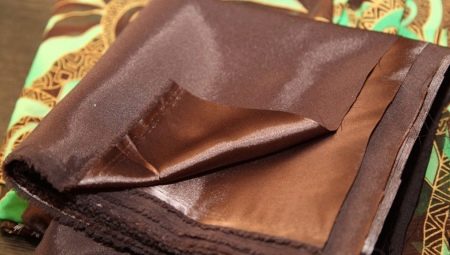
When buying fabric, it is important to understand which side is the front and which is the wrong side. The appearance of the future product will depend on this, and you should not neglect the rules for determining the "face", because not every matter is so easy to understand immediately.
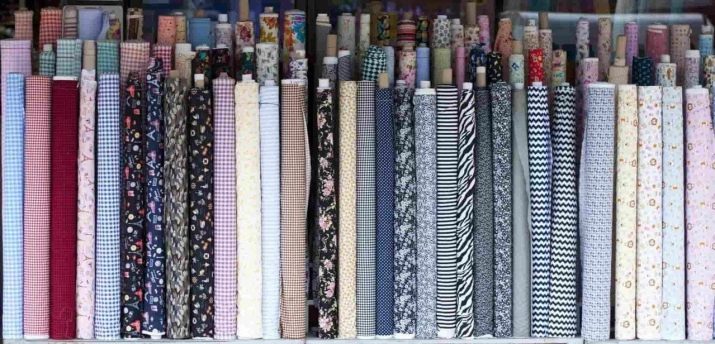
The offered assortment of modern canvases is so diverse that even experienced seamstresses find it difficult to determine the right and wrong sides. In the publication we will tell you how the sides of different types of fabric differ, and how to highlight the outer surface.
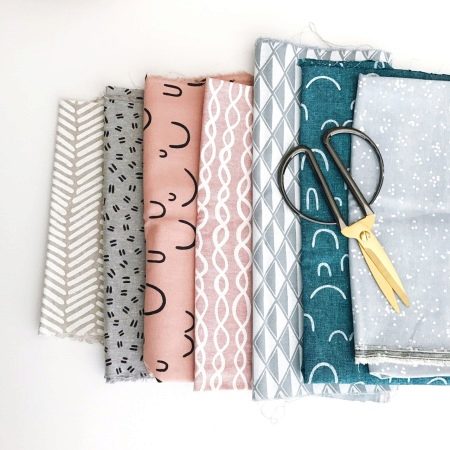
What it is?
Most fabrics have the front and back sides - they are called one-sided. Their side for sewing is brighter, it looks better compared to the wrong side, there are no inscriptions and defects on this surface of the canvas.
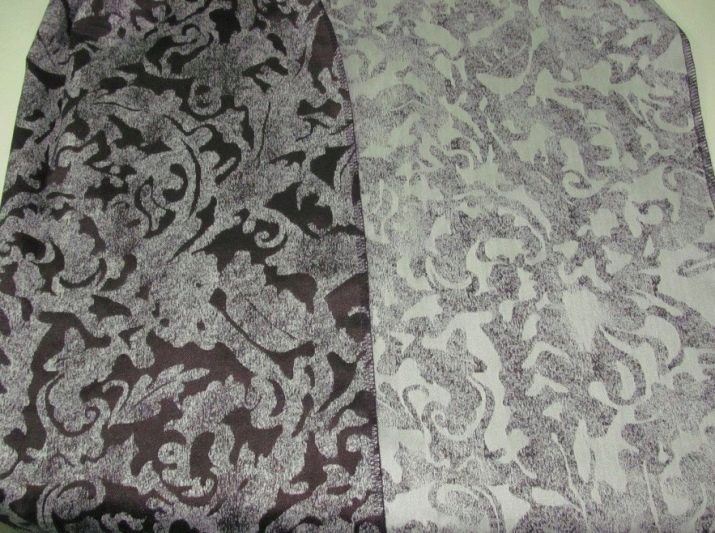
With double-sided fabric, everything is simple: both sides are absolutely the same. Usually curtains are sewn from such materials: it can be crepe satin, spandex, other types - as a rule, these are plain-dyed fabrics. In most cases, when buying fabric, you have to determine the side for sewing.
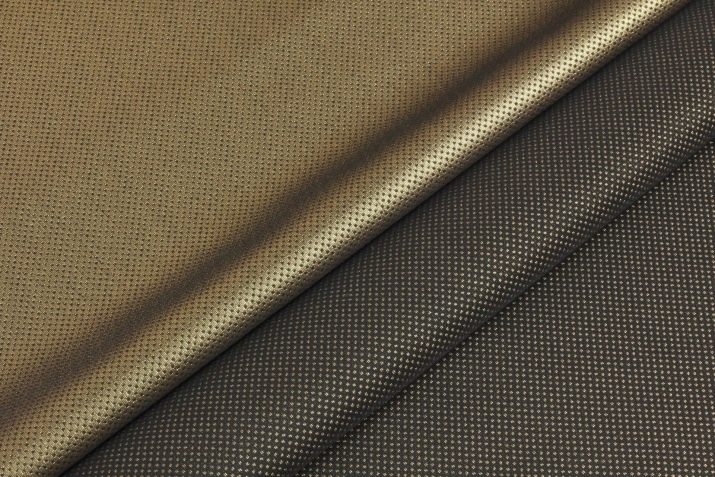
There are enough ways to identify the "face" of fabric surfaces: this can be done by the edge, determined by the interweaving of threads, by texture, pattern, and so on. Let us dwell in detail on the most characteristic features, and we will understand how to identify the desired surface in difficult cases.

How to distinguish by edge?
The front side can be identified by the edge. This part of the fabric is often made compacted - this technology allows the fabric not to crumble. The seal is the edge, it is visible only "from the face". But from the seamy side, you can see the holes. That is, to understand where the wrong side is, and where is the “front” on the fabric, you can use the punctures, which are made with a loom along the edge from the wrong side. They are not visible on the front surface, but when felt with fingers, they are felt as bulges.
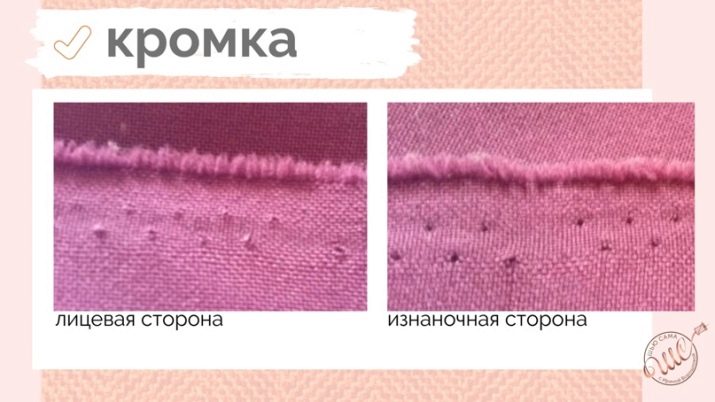
The following fabrics have such an edge:
-
organza;
-
silks;
-
flax;
-
cambric;
-
chiffon;
-
gauze;
-
muslin and others.
If it is difficult to understand where the wrong side is and where the “face” is, you can ask the seller to mark any of the sides with chalk when buying fabric in the store. Only in this case, get to work faster, while the chalk mark is visible. And most importantly, do not forget whether a mark was made on the front or seamy surface.
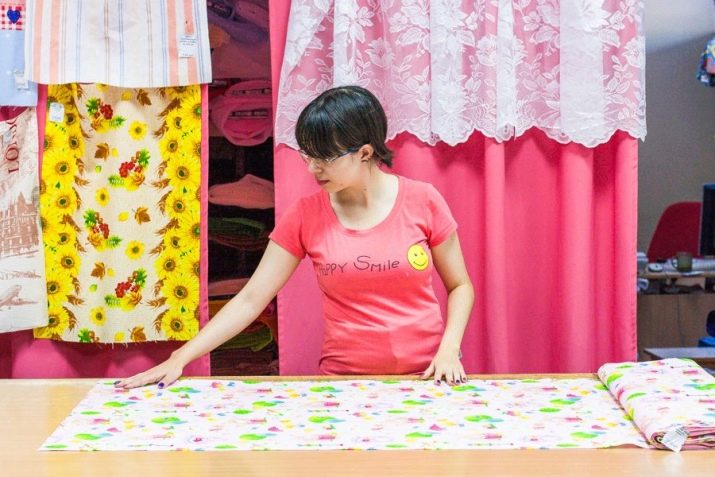
Determination by the peculiarities of the weaving of threads
You can find out the sides by the way the fibers weave in the material. It can be longitudinal (warp) and transverse (the main fiber overlaps the weft thread). But what types of weaving are:
-
linen;
-
twill (diagonal);
-
satin weave (or satin).
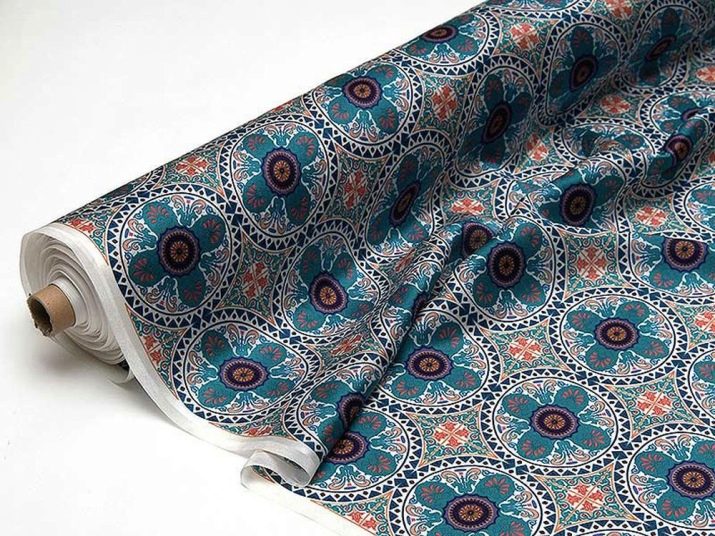
The most common weave is the plain weave, where the weft thread overlaps the warp thread. Such a fabric has the same surface on both sides - these are:
-
chintz fabric;
-
coarse calico fabric and most fabrics for sewing linen;
-
natural and artificial silk;
-
wool and other paid materials.
With this type of weave for plain-dyed fabrics, the front side will be the one that looks better and brighter, as well as without the fluff.
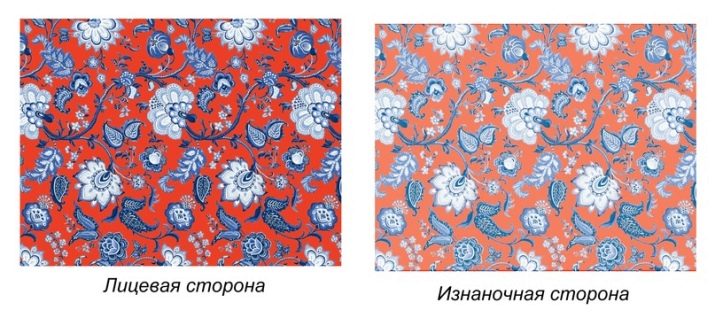
With twill weaving (when one weft thread overlaps 2-3 warp fibers at once, or vice versa), a scar is formed. This is how lining twill, boston and a number of other fabrics are produced. The main side of such fabrics is the surface where the scars go from bottom left to top in the right slope.
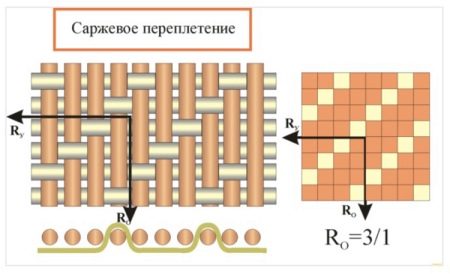
Well, the technique of satin or satin weave is that the fabric has a smooth base with a gloss (this is when one weft thread overlaps from 4 to 8 warp threads at once, or vice versa). The side that glitters is the front, and the wrong side goes in a matte surface.

How else to distinguish the sides?
It is difficult to find the outside on a solid base. So, in a canvas woven with a rep weave, it is practically impossible to distinguish the inside from the main surface of the matter. Many seamstresses use this material as double-sided. For example, this is how crepe fabrics are sewn.
If the sides visually seem to be the same, experienced needlewomen begin to feel the canvas - often tactile sensations lead to the correct conclusion.
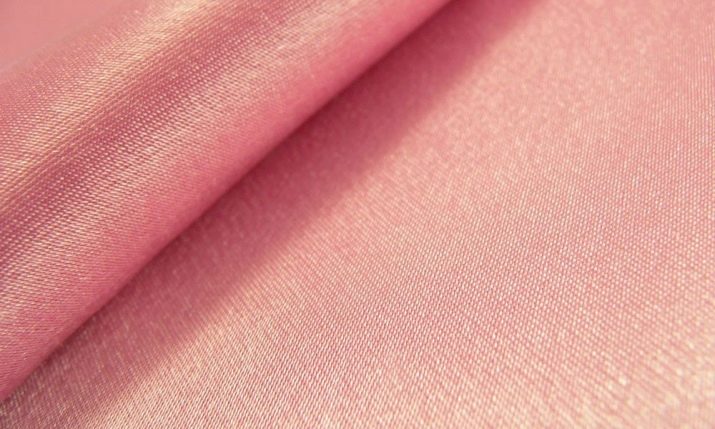
It is difficult to determine the right side of synthetic fabrics.
As a rule, a single-color synthetics in a roll comes without defects, which allows it to be used as a double-faced fabric. At first glance, the cloth is the same, but this material still has a less dense hairiness on the wrong side.

If you still could not figure out where the “face” is and where is the wrong side of a plain or plain-colored fabric, do not be upset: choose the part for the body that is more pleasant to the touch. Even if you made a mistake with the choice, it will not be noticeable to others: only you will know about it.
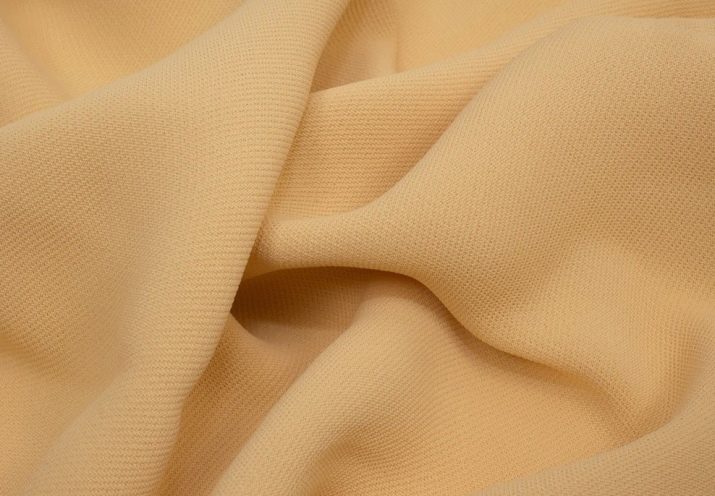
It is much easier to determine the front side and the wrong side of woven fabrics with a pattern or with a pile. However, here, too, there are some nuances that must be taken into account. Let's take a closer look at these categories of canvases.
By texture and pattern
If the drawing is applied by printing, then in the color scheme the front surface will be more saturated than the wrong side. The latter will look faded and not so impressive. The woven pattern will also be distinguished by the clarity of the lines and the bulge on the main part, the seamy surface in this case will be almost smooth.
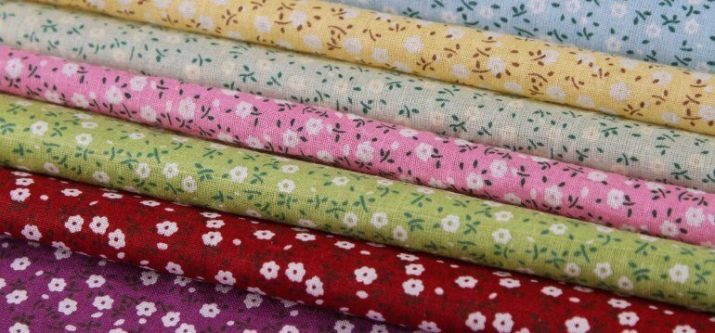
The front side on a fabric with a pattern is quite easy to distinguish: a bright print stands out clearly. In case of difficulty, touch the fabric to the touch - the main surface comes with an even pile and a slight sheen, but the reverse is duller and not so fleecy.
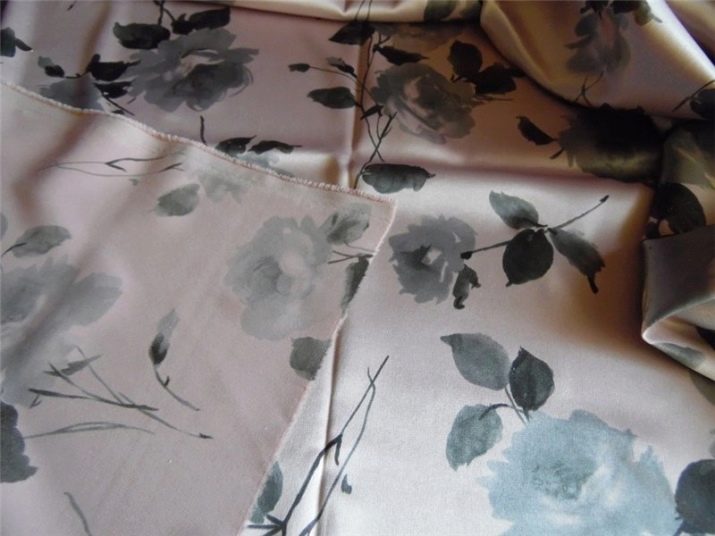
For materials with pile
Blankets and car covers are often made from pile fabric - products made from such a composition are very warm and comfortable. Determining the right side for sewing on a pile fabric is quite simple: the front surface of such a fabric usually comes with soft, thick fibers, and on the wrong side there may not be any lint at all, or short and thin fleecy fibers can be seen.
Determine the sides of the fabric only in good light. Bulb lighting can distort the colors of fabrics, so do not try to check surfaces in the evening with the room light on. So dull hues can appear bright and vice versa.
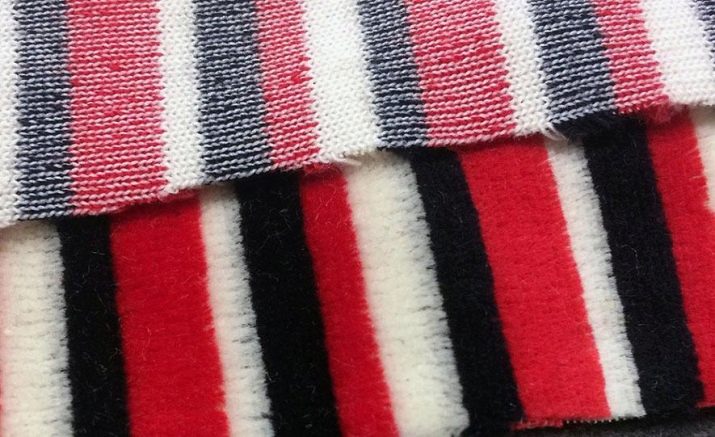
In many cases, you can understand where the front side is, while still in the store - just look at how the fabric is wound in a roll. Woolen fabrics and silks always roll with the wrong side up, and with their "face" inward - this kind of careful attitude allows you to keep the material without damaging the main surface.
But the cotton fabric is rolled up the other way round - inside the wrong side. It is easy to determine the outer side of mixed fabrics - this is a perfectly flat surface, all defects and roughness are visible only from the inside.









